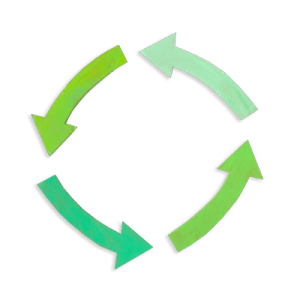Make a water cycle mobile
We learn the stages of the water cycle by making a mobile out of cotton balls, paper and string.
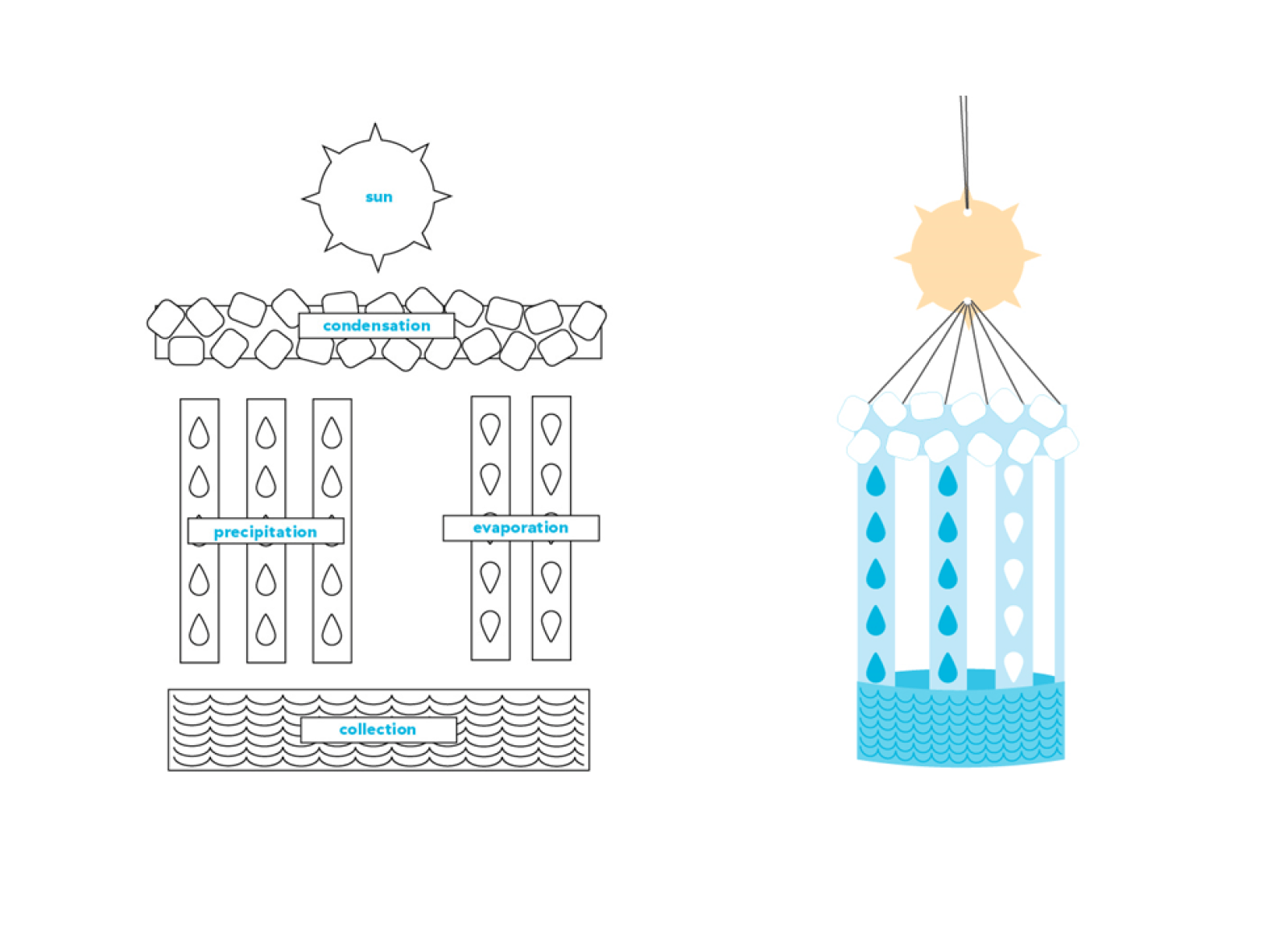
Overview
Design and craft a mobile that reinforces our understanding of the water cycle.
Instructions
What you'll need
- “Water cycle” image
- Example water cycle mobile
- Cotton balls
- Scissors and glue
- Tape or stapler (optional)
- Crayons, pencil crayons or markers
- Each student needs:
- One letter size sheet of paper for the sun
- Two strips of paper for condensation and runoff
- Six strips of paper for precipitation and evaporation
- String
- Hole punch
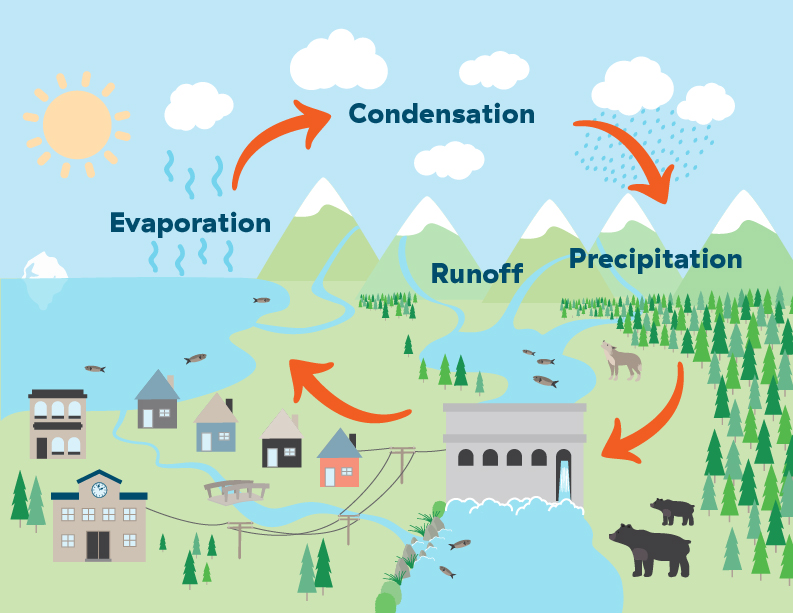
- Before you get started, ask students what they remember about the water cycle.
- Review the “Water cycle” image, including the four stages of evaporation, condensation, precipitation, and runoff.
- Show students a mobile that you’ve made ahead of time and what they’ll use to build their own.
- Have them prepare and gather their materials:
- Sun: Have students cut a piece of paper in a circle to represent the sun.
- Evaporation: Pre-cut (or have students cut) three 2 cm wide strips of paper, cutting along the width of the sheet.
- Condensation: Pre-cut (or have students cut) one 7 cm wide strip of paper, cutting along the length of the sheet.
- Precipitation: Pre-cut (or have students cut) three 2 cm wide strips of paper, cutting along the width of the sheet.
- Runoff: Pre-cut (or have students cut) one 7 cm wide strip of paper, cutting along the length of the sheet.
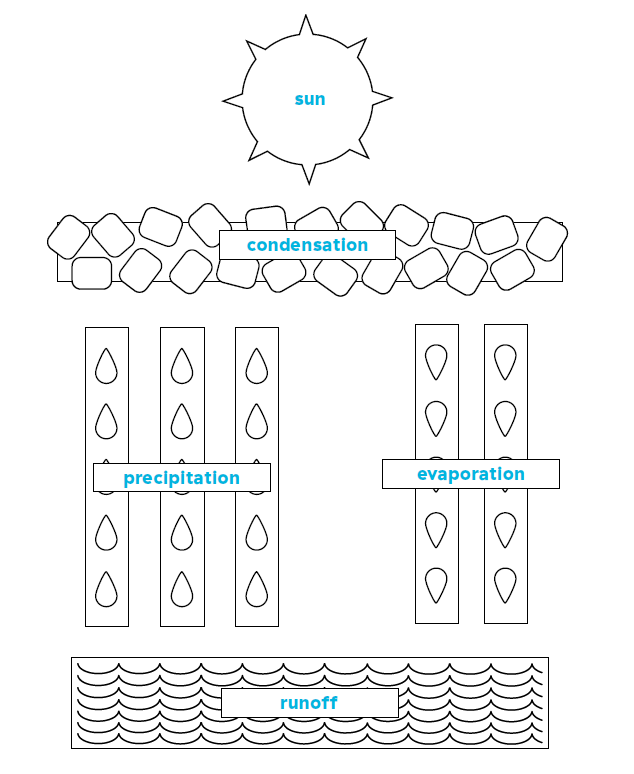
- Now decorate and label the materials like in the example above:
- Sun: Colour the circle and label it “sun”.
- Evaporation: Decorate the strips to represent evaporation (vapour lines or water drops moving upwards). Write “evaporation” on one of the strips.
- Condensation: Decorate the strip with cotton balls to represent condensation or clouds. Write “condensation” on the strip.
- Precipitation: Decorate the strips to represent precipitation (rain drops, snow falling, etc.). Write “precipitation” on one of the strips.
- Runoff: Decorate the strip with the colour blue, waves, etc. to represent runoff. Write “runoff” on the strip.
- Start assembling the mobile:
- Punch a hole in the top and the bottom of the sun.
- Glue or tape the precipitation and evaporation strips vertically between the runoff and condensation strips.
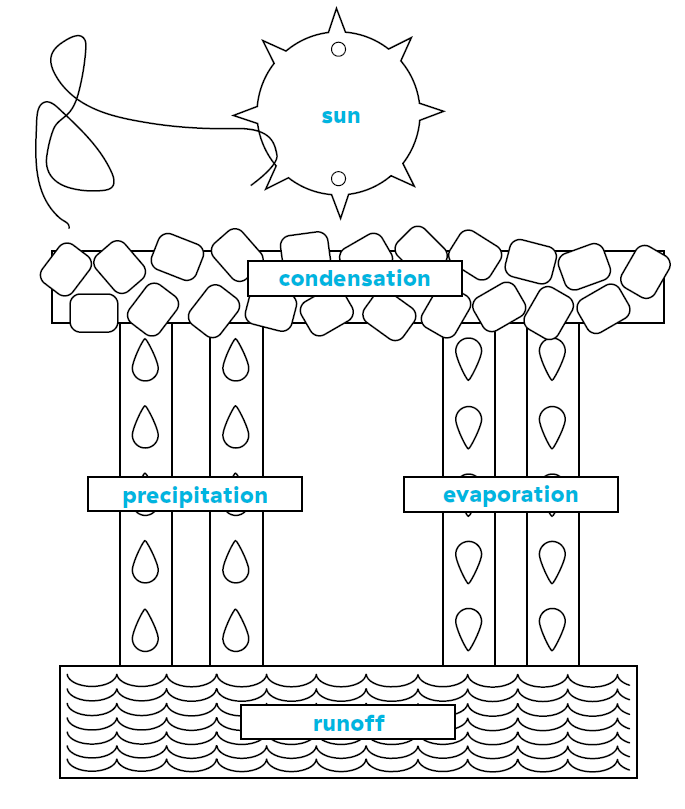
- Using glue, tape, or a stapler attach the ends of the condensation strip and the ends of the runoff strip together to make two circles.
- Punch four holes evenly around the condensation strip.
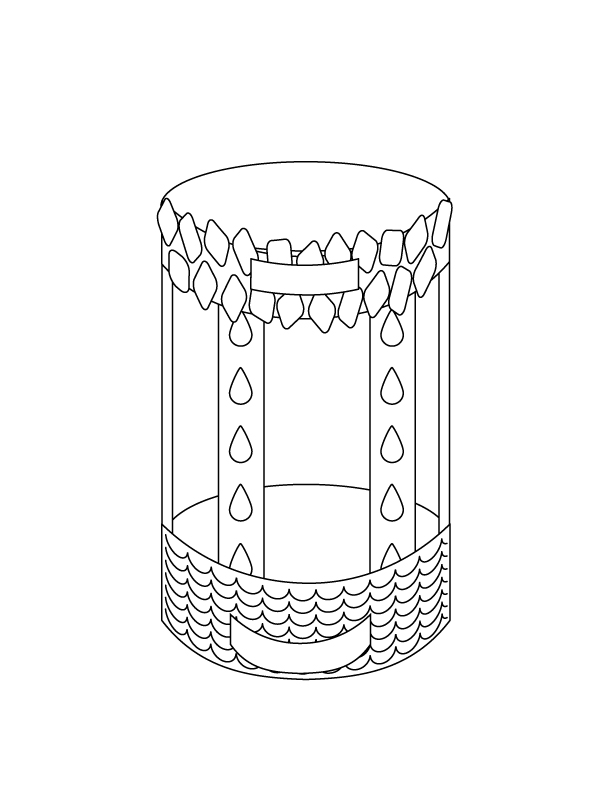
- Connect the hole at the bottom of the sun to the four holes in the condensation strip using string.
- Attach string to the top of the sun and voila – they’re ready to hang around the classroom.
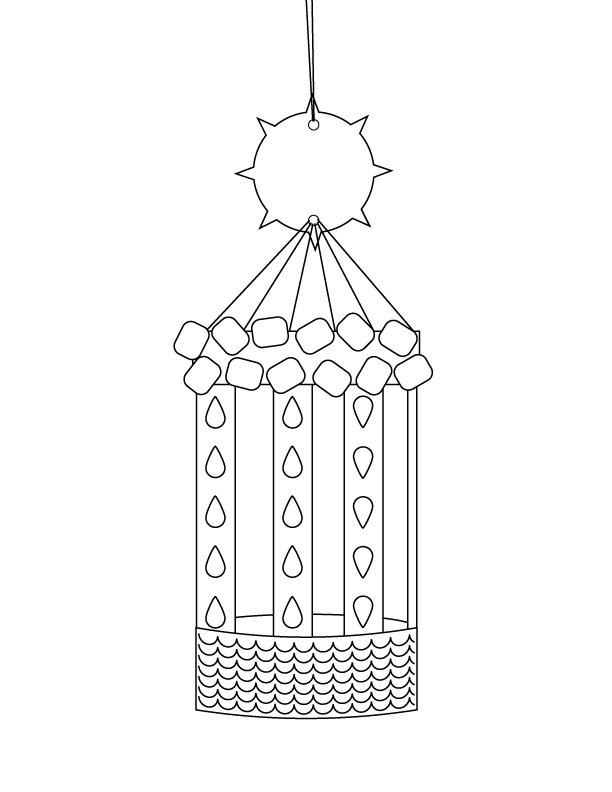
- As a group, talk about the water cycle and ask students if they have any questions.
Modify or extend this activity
- Have students choose a question they have about the water cycle and find the answer to share with the class.
- Instead of creating a mobile, students can create a representation of the water cycle with art supplies, identifying the four stages.
- Watch a fun video and lead a quick activity about the “Power of falling water”.
Curriculum Fit
Grade 2 Science
Content
- Water sources including local watersheds
- Water cycle
Curricular competencies
Questioning and predicting
- Demonstrate curiosity and a sense of wonder about the world
- Ask questions about familiar objects and events
Processing and analyzing data and information
- Sort and classify data and information using drawings, pictographs and provided tables
Applying and innovating
- Transfer and apply learning to new situations
Communicating
- Communicate observations and ideas using oral or written language, drawing or role-play
Assessments
- Assess “Water cycle” mobiles for understanding of the water cycle.
Teaching Notes
Water cycle
Earth has a limited supply of water that is cycled over and over again. The water cycle is an important process on earth because living things, including animals and humans, need water to grow and survive. Water is used for drinking, growing food, providing habitat, generating electricity and more. The sun has been driving the water cycle on Earth for billions of years. The four main stages of the water cycle are evaporation, condensation, precipitation and runoff.
- Sun: The water cycle is driven by the energy from the sun warming the earth.
- Evaporation: The warmth of the sun causes water from lakes, rivers and oceans to evaporate and turn from a liquid to a gas. The water vapour (gas) rises up into the air.
- Condensation: The water vapour cools as it rises and turns back into water droplets, forming a cloud.
- Precipitation: Water droplets in a cloud eventually become too big and heavy and fall from the clouds in the sky. It can fall as rain, snow, hail, etc.
- Runoff: After the precipitation falls, it flows down towards the ocean and collects in rivers, lakes and streams. Some of it collects underground as well.
- And then the cycle begins again.
Preparing the materials
This activity uses paper cut into strips. The strips for condensation and runoff should be longer and wider than the precipitation and evaporation strips.
Conservation tip: Cut letter size paper into three vertical strips (approximately 7 cm wide) for condensation and runoff, two for each student. Cut paper into twelve horizontal strips (approximately 2 cm wide) for precipitation and evaporation. Each student needs six.
You can cut the strips for evaporation, precipitation, condensation and runoff ahead of time or have students do it. Feel free to use coloured paper, construction paper or have students decorate the strips themselves.






